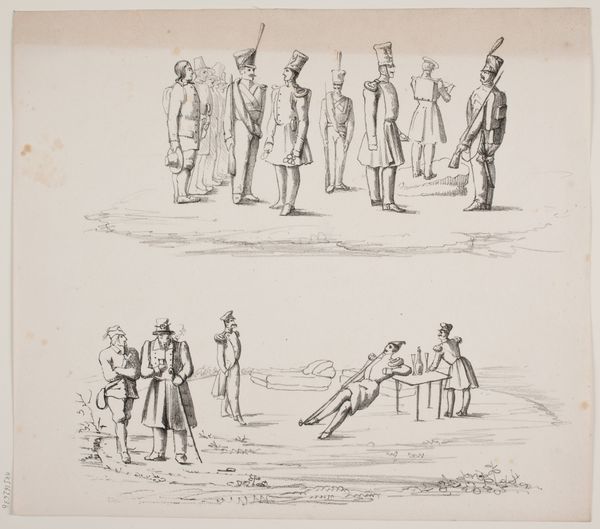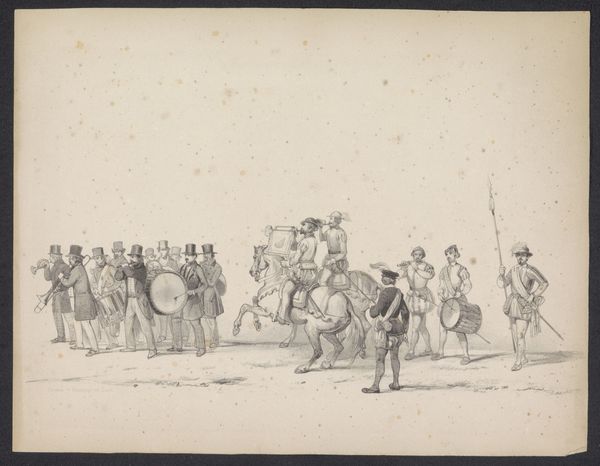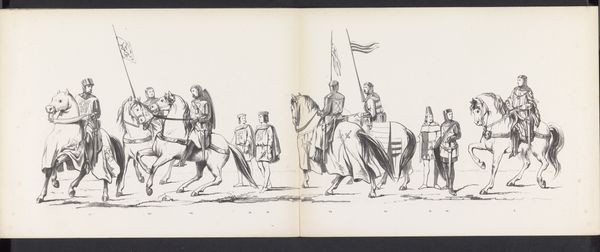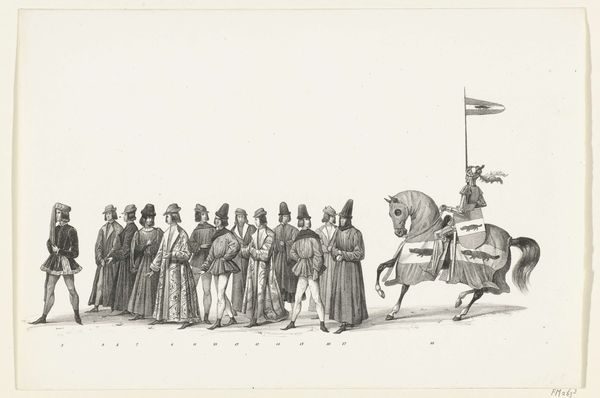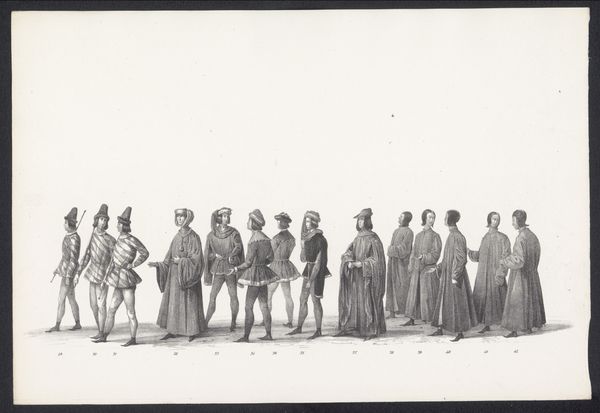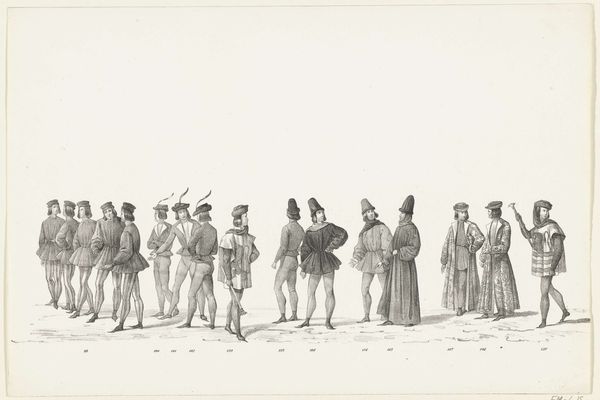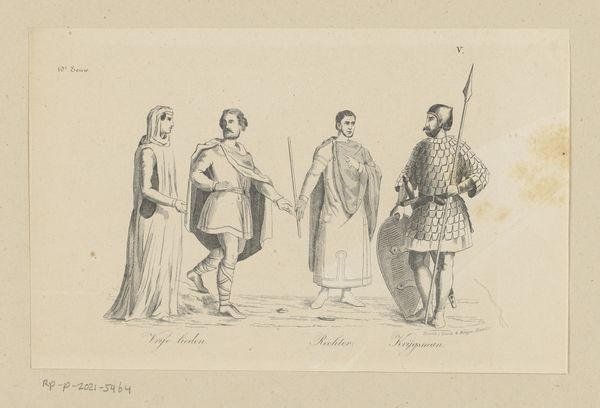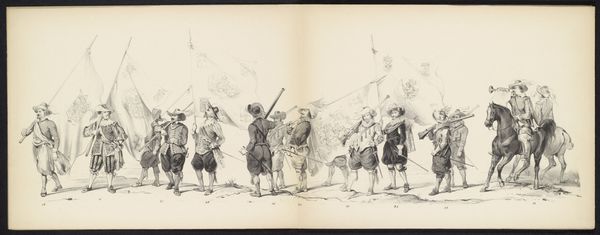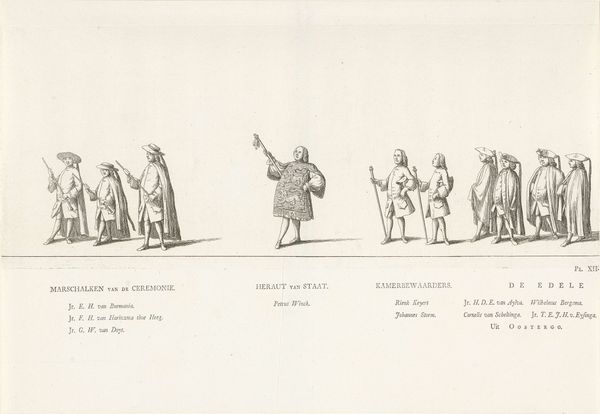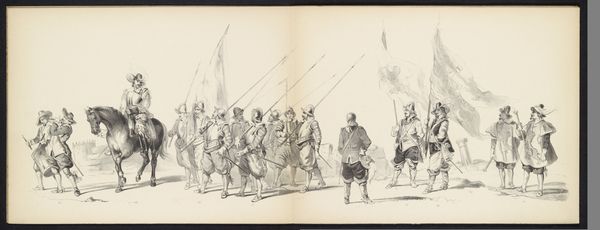
Maskerade van de Leidse studenten, 1865 (plaat 13) 1865
0:00
0:00
Dimensions: height 275 mm, width 720 mm
Copyright: Rijks Museum: Open Domain
Curator: Here we have a pen and ink drawing from 1865 by Jan Daniël Cornelis Carel Willem baron de Constant Rebecque titled "Maskerade van de Leidse studenten, 1865 (plaat 13)", depicting a procession of figures. What's your immediate impression? Editor: It feels very austere, almost regimented. There’s a starkness in the lines and the repetition of figures; the texture, even just rendered in ink, suggests something quite rough. Curator: The artist was deeply involved in historical societies and these drawings often depicted important historical moments and student traditions, contributing to a sense of national identity and academic ritual in the 19th century. Editor: Interesting! Knowing that context gives me a different perspective. Looking at the materials and technique, the quick strokes of the pen, repeated forms, really speak to production – almost mass production – of images to propagate a particular historical vision. It also speaks of labour intensive process. Curator: Precisely. The romantic style allowed the artist to engage the audience by depicting history in a rather idealised manner, which contributed to creating heroic national myths that were displayed and shared widely. Editor: I’m struck by how the focus is less on the individual student than on the collective, or the role they’re performing. The rough application makes me think of affordability too. What sort of printing process would they have used? And for what specific audience? Curator: The artwork probably was not meant to function as a detailed individual portrait but more like a piece commemorating Leiden student culture, consumed among university attendees or alumni eager to own these mementos. It is interesting to consider how images like these help to reinforce social cohesion, belonging, or hierarchies, whether conscious or not. Editor: I suppose, by framing specific cultural memories and practices as 'historical,' these drawings performed important ideological work, creating and then affirming student traditions. Considering their method of production alongside their subject provides additional context. I’m curious to learn about how Leiden student culture might have informed their circulation, too. Curator: This piece underscores how art shapes collective memories, but also reflects certain historical ideals promoted in mid-19th century academic circles, which influenced art trends and culture, but also academic institutions. Editor: Absolutely. Seeing the intersection between process and content here makes you consider these drawings in relation to production and identity creation. Curator: Yes, thinking about their history can provide even greater context and insight.
Comments
No comments
Be the first to comment and join the conversation on the ultimate creative platform.



